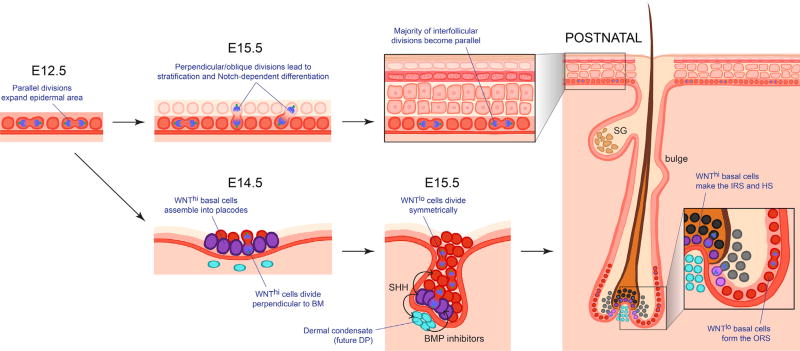Figure 3. Skin Morphogenesis.
Shortly after gastrulation, the skin begins as a single layer of epidermal progenitors that divide exclusively parallel to the basement membrane underneath. Within several days, divisions become first oblique and then more perpendicular, leading to asymmetric fates, stratification, and differentiation of the epidermis. During this time, hair placodes also form from gathering WNThigh cells within the basal layer. When these cells begin to divide, they do so perpendicular to the basement membrane, leading to asymmetrically fated daughters. WNThigh cells produce SHH, but only neighboring cells appear to respond. SHH prompts the mesenchyme underneath to organize into a dermal condensate and produce BMP inhibitors. SHH also prompts the overlying daughter cells that lose contact with the basement membrane to dampen WNT signaling and divide symmetrically. These WNTlow daughters will generate the outer root sheath (ORS) which develops a niche (bulge) of stem cells, while the WNThigh daughters generate the inner root sheath (IRS) and hair shaft (HS). DP, dermal papilla; SG, sebaceous gland.

